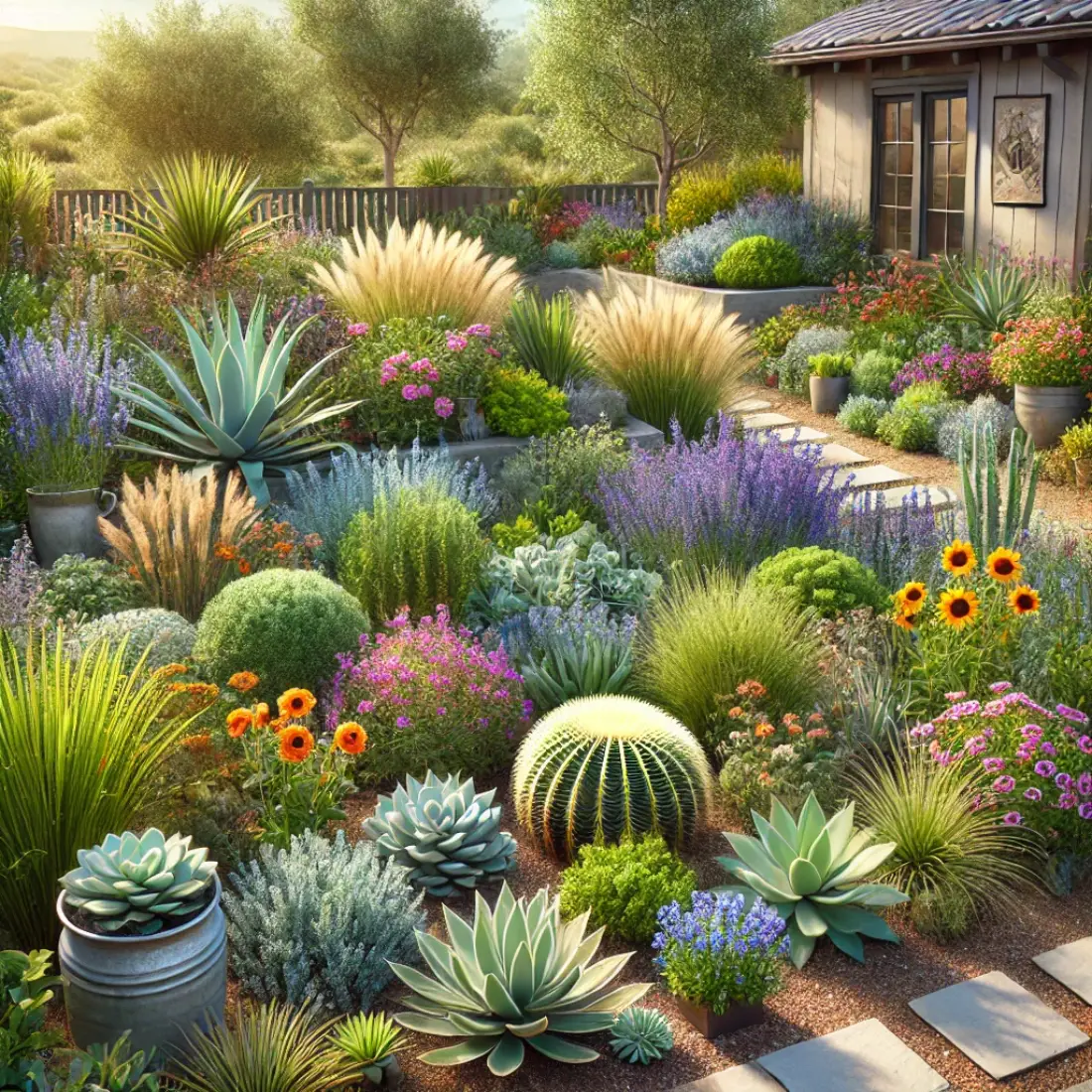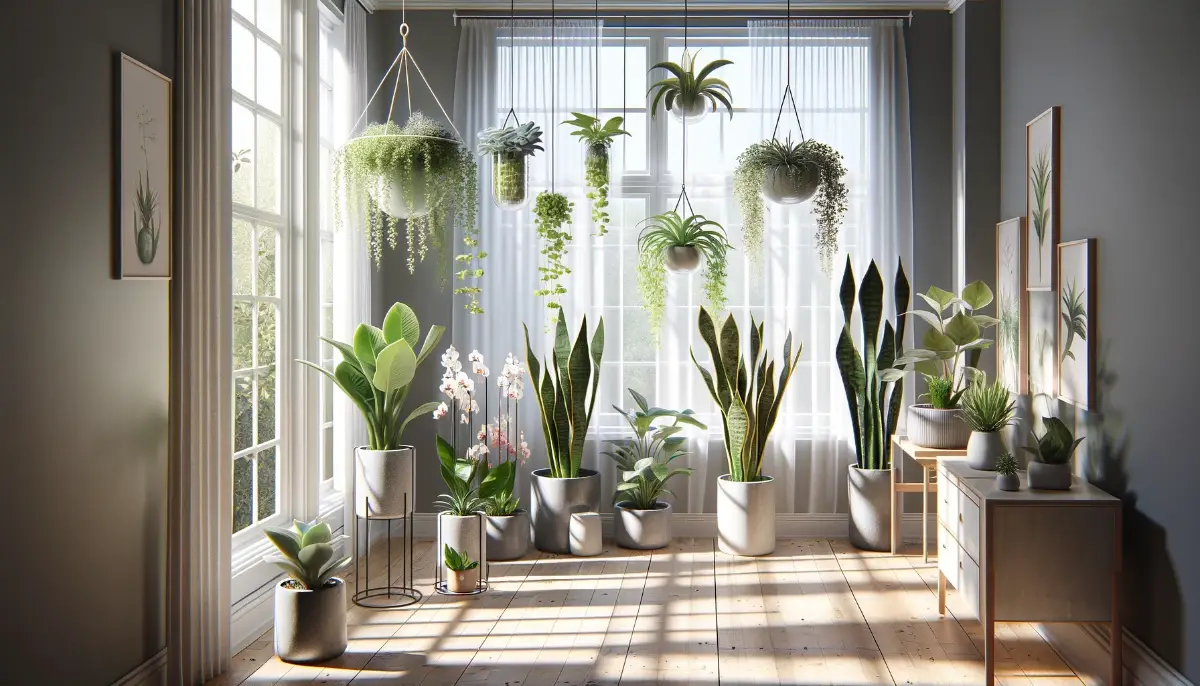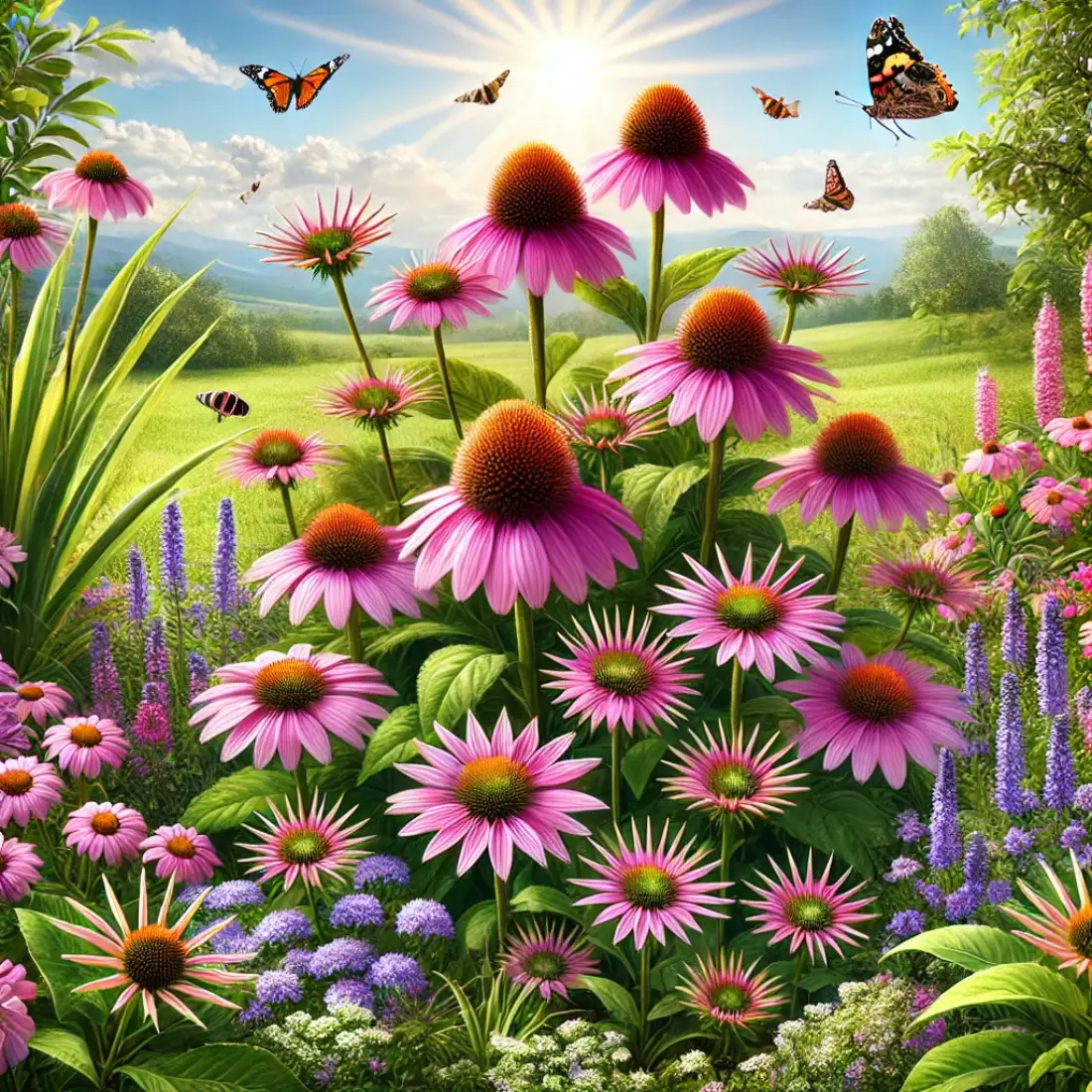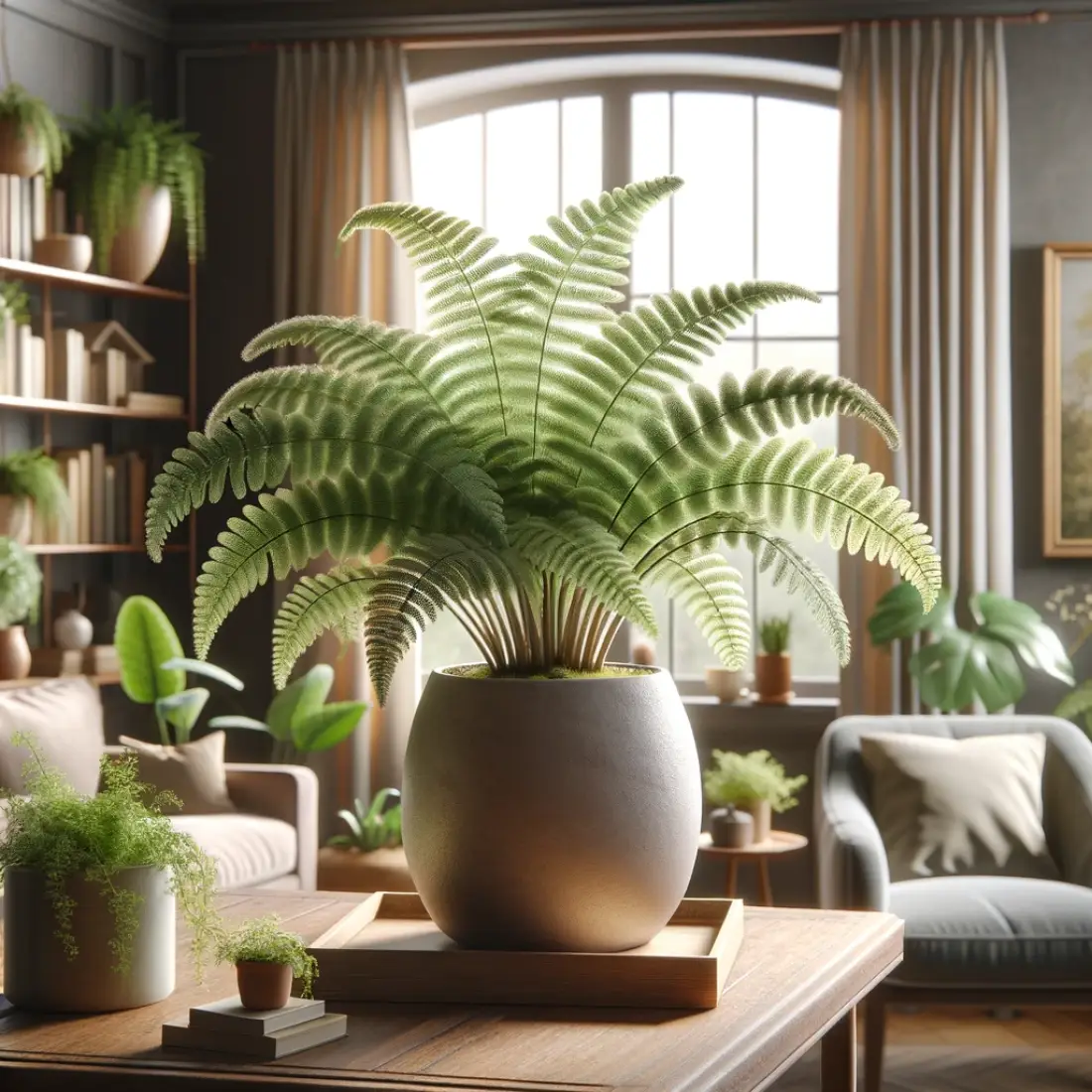Growing drought-tolerant plants at home is a smart choice for anyone looking to conserve water and maintain a beautiful garden with minimal effort. These resilient plants thrive in dry conditions, making them perfect for areas with water restrictions or for gardeners who prefer low-maintenance options.
By incorporating drought-tolerant plants into your home garden, you can enjoy lush greenery and vibrant blooms while contributing to environmental sustainability.
- Drought-tolerant plants require less water.
- Ideal for regions with water restrictions.
- Provide vibrant colors and lush foliage with minimal maintenance.
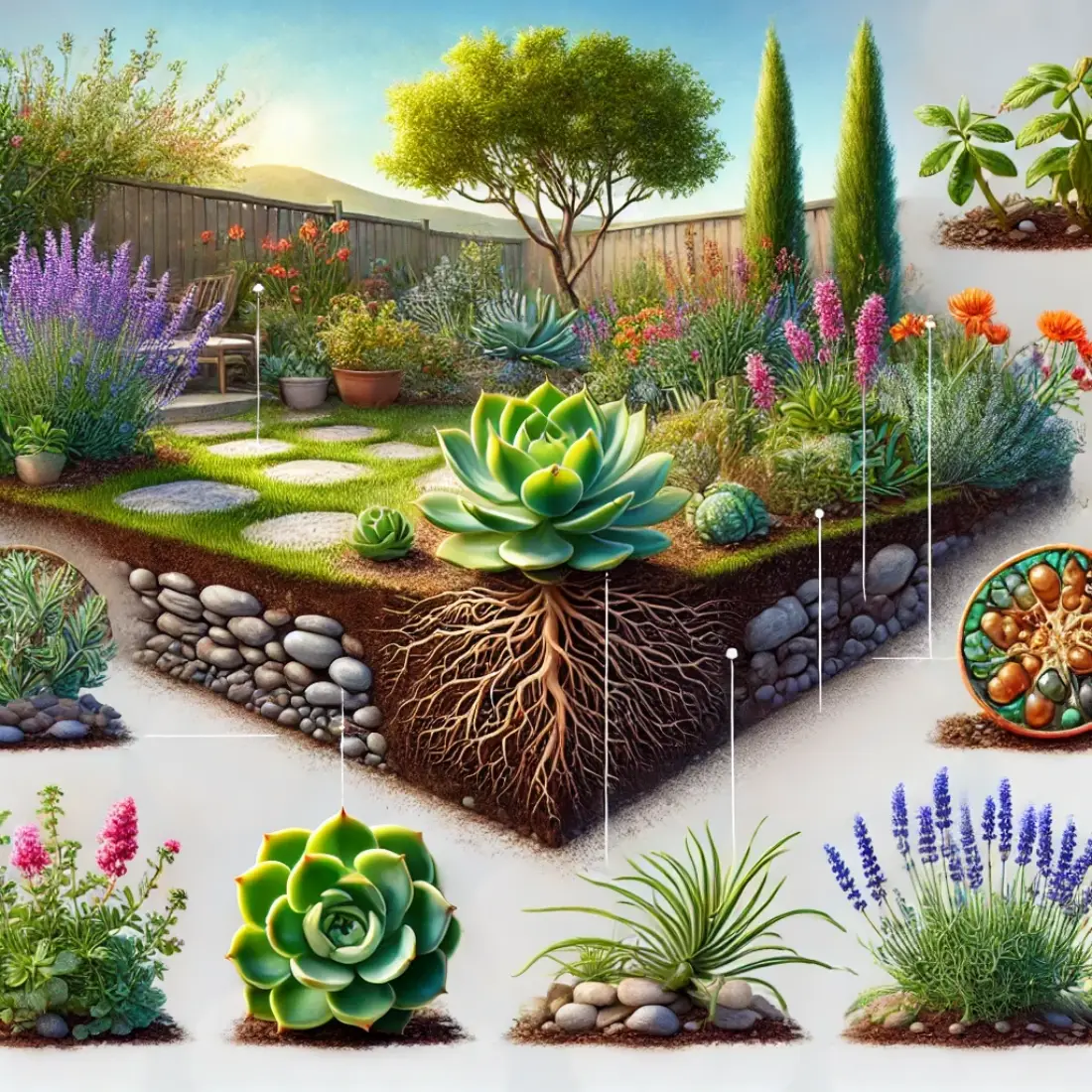
What Are Drought-Tolerant Plants?
Drought-tolerant plants are species that thrive with minimal water. They have unique adaptations like deep root systems, waxy leaves, and water-storing tissues that enable them to survive in dry conditions.
One of the key features of these plants is their deep root systems, which allow them to access moisture deep in the soil. Additionally, their waxy leaves reduce water loss through transpiration. Many drought-tolerant plants, such as succulents and cacti, store water in their leaves or stems, enabling them to withstand long periods without rain.
Common examples of drought-tolerant plants include succulents like Aloe Vera and Echeveria, Mediterranean herbs such as Lavender and Rosemary, and ornamental grasses like Blue Fescue. These plants not only survive but often thrive in dry conditions, making them excellent choices for water-wise gardens.
The importance of growing drought-tolerant plants in your home garden cannot be overstated, especially in regions prone to drought or with water restrictions. These plants help conserve water, reduce the need for frequent watering, and lower water bills. Additionally, they contribute to a more sustainable environment by minimizing water usage and reducing the demand on local water supplies.
How to Choose the Right Drought-Tolerant Plants
Selecting the right drought-tolerant plants for your home garden involves understanding your local climate, soil conditions, and sunlight availability. These factors will help ensure that the plants you choose can thrive with minimal water.
Consider Your Climate
The first step is to consider the climate of your area. Drought-tolerant plants are often native to regions with similar weather conditions. For instance, succulents and cacti are well-suited for hot, arid climates, while Mediterranean herbs like Lavender and Rosemary flourish in regions with dry summers and mild winters.
Assess Soil Types
Soil type plays a crucial role in the success of drought-tolerant plants. These plants generally prefer well-draining soil to prevent root rot. Sandy or rocky soils are ideal, but you can amend clay-heavy soils with organic matter or sand to improve drainage. Conduct a soil test to determine the pH and nutrient levels, then choose plants that match these conditions.
Determine Sunlight Exposure
Most drought-tolerant plants require full sun to partial shade. Assess the amount of sunlight your garden receives daily. Plants like Agave and Sedum thrive in full sun, while others like Coral Bells can tolerate partial shade. Position your plants in areas where they will receive the appropriate amount of light to ensure healthy growth.
Top Drought-Tolerant Plants for Your Home Garden
Incorporating drought-tolerant plants into your home garden can create a vibrant and low-maintenance landscape. Here are some top choices:
Succulents and Cacti
Succulents and cacti are popular for their unique appearance and ability to store water in their leaves and stems.
- Aloe Vera: Known for its medicinal properties, Aloe Vera requires minimal watering and thrives in full sun.
- Echeveria: These rosette-shaped succulents come in various colors and are perfect for rock gardens and containers.
- Barrel Cactus: With its round shape and spiky exterior, the Barrel Cactus adds a distinctive look to any garden.
Mediterranean Herbs
Mediterranean herbs are not only drought-tolerant but also useful in the kitchen.
- Lavender: Known for its fragrant purple flowers, Lavender is perfect for garden borders and attracts pollinators.
- Rosemary: This herb is excellent for culinary use and produces small blue flowers.
- Thyme: A low-growing herb, Thyme is ideal for ground cover and has a pleasant aroma.
Ornamental Grasses
Ornamental grasses add texture and movement to your garden.
- Blue Fescue: This compact grass has a striking blue-gray color and grows well in sunny, dry conditions.
- Feather Reed Grass: Known for its upright growth and feathery plumes, this grass is perfect for adding height to your garden.
Drought-Tolerant Shrubs
Shrubs can provide structure and year-round interest to your garden.
- Sage: With its aromatic leaves and beautiful flowers, Sage is both decorative and functional.
- Oleander: This evergreen shrub produces vibrant flowers and can tolerate hot, dry climates.
- Butterfly Bush: Attracts butterflies and produces fragrant blooms in various colors.
Perennial Flowers
Perennial flowers return year after year, providing lasting beauty.
- Coneflowers: Known for their daisy-like appearance, Coneflowers are hardy and drought-resistant.
- Black-Eyed Susans: These bright yellow flowers are easy to grow and thrive in dry conditions.
- Yarrow: With its clusters of small flowers, Yarrow is a tough plant that can handle drought well.
Preparing Your Garden for Drought-Tolerant Plants
Creating an ideal environment for drought-tolerant plants involves several key steps to ensure they thrive with minimal water.
Soil Preparation
Start by assessing your soil. Drought-tolerant plants generally prefer well-draining soil to prevent root rot. If your soil is heavy clay, amend it with organic matter like compost or sand to improve drainage. Conduct a soil test to determine its pH and nutrient levels, and adjust as needed to match the requirements of the plants you choose.
Mulching Techniques
Mulching is crucial for retaining soil moisture and reducing water evaporation. Apply a 2-3 inch layer of organic mulch, such as wood chips or straw, around your plants. This helps maintain a stable soil temperature, suppresses weeds, and conserves water by slowing evaporation.
Irrigation Systems
Even though drought-tolerant plants require less water, efficient irrigation can help establish them. Drip irrigation systems are highly effective as they deliver water directly to the plant roots, minimizing waste. Water your plants deeply but infrequently to encourage deep root growth. Newly planted drought-tolerant plants will need regular watering until they are established.
Plant Placement
Proper placement is essential. Group plants with similar water and sunlight needs together. Place plants that require full sun in areas that receive the most light, and those that tolerate partial shade in less exposed spots. Ensure there is adequate space between plants to allow air circulation and reduce competition for water.
FAQs about Drought-Tolerant Plants
What Are the Best Drought-Tolerant Plants for Beginners?
Succulents and Mediterranean herbs like Lavender and Rosemary are excellent for beginners due to their low maintenance and ability to thrive with minimal water.
How Often Should I Water Drought-Tolerant Plants?
Most drought-tolerant plants thrive with deep, infrequent watering. Water thoroughly when the soil is completely dry, typically every 2-3 weeks.
Can Drought-Tolerant Plants Survive in Containers?
Yes, many drought-tolerant plants do well in containers. Ensure proper drainage and use well-draining soil to prevent waterlogging.
Do Drought-Tolerant Plants Attract Pollinators?
Many drought-tolerant plants, such as Lavender, Coneflowers, and Butterfly Bushes, attract bees, butterflies, and other pollinators.
Are All Succulents Drought-Tolerant?
Most succulents are drought-tolerant due to their ability to store water in their leaves. However, some may require slightly more water than others, so it’s essential to research specific types.
How Do I Know If a Plant Is Drought-Tolerant?
Look for plants with features such as deep root systems, small or waxy leaves, and the ability to store water in their tissues. Check plant labels or consult gardening resources for specific drought-tolerant varieties.
Can I Use Mulch with Drought-Tolerant Plants?
Yes, mulching is highly beneficial for drought-tolerant plants. It helps retain soil moisture, reduces evaporation, and keeps the soil cool.
What Is Xeriscaping?
Xeriscaping is a landscaping method that focuses on using drought-tolerant plants and water-conserving techniques to create sustainable and low-maintenance gardens.
Do Drought-Tolerant Plants Need Fertilizer?
Drought-tolerant plants generally require less fertilizer than other plants. However, light feeding with a balanced, slow-release fertilizer can support healthy growth, especially during the growing season.
Can Drought-Tolerant Plants Be Grown Indoors?
Some drought-tolerant plants, such as succulents and certain herbs, can be grown indoors. Ensure they receive plenty of light and use well-draining soil to prevent overwatering.

